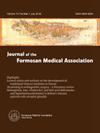The incidence of Clostridium difficile infection in children with and without inflammatory bowel diseases: A single-center study in Taiwan from 2006 to 2019
IF 2.6
3区 医学
Q1 MEDICINE, GENERAL & INTERNAL
引用次数: 0
Abstract
Background
The incidence of Clostridium difficile infection (CDI) is increasing around the world, and patients with inflammatory bowel disease (IBD) have a higher risk of obtaining CDI. The data on the incidence rate of CDI in the Asian pediatric IBD population was lacking.
Methods
We retrospectively collected data from a tertiary medical center in Taipei, Taiwan. All patients aged 1–18 years old who visited the outpatient department or were admitted to our hospital between 2006 and 2019 were included. CDI was defined as positive stool C. difficile toxin or C. difficile culture results with appropriate antibiotic use within the range of 7 days prior or 14 days after the result.
Results
We compared the average annual incidence of CDI before and after 2013. The average incidence of community-acquired CDI (CA-CDI) increased from 0.063 to 0.564 cases per 1,000 visits, with a rate ratio (RR) of 8.82 (95% CI 5.74-14.38). In patients with IBD, the rate increased from 26.738 to 278.873 cases per 1,000 visits (RR=10.12, 95% CI: 4.57-29.02). The average incidence rate increased from 0.685 to 1.874 cases per 1,000 admissions in pediatric general patients (RR = 2.72, 95% CI 1.82-4.20) and from 14.706 to 62.500 cases per 1,000 admissions in pediatric IBD patients (RR = 3.77, 95% CI 0.71-93.53).
Conclusion
Both CA-CDI and healthcare facility-onset CDI (HO-CDI) were increasing substantially in the pediatric population over the past decade in Taiwan. Compared to the general pediatric population, pediatric IBD patients had a much higher incidence of CDI.
患有和未患有炎症性肠病的儿童中艰难梭菌感染的发生率:2006-2019年台湾单中心研究。
背景:艰难梭菌感染(CDI)的发病率在全球呈上升趋势,而炎症性肠病(IBD)患者感染CDI的风险更高。目前尚缺乏亚洲儿童 IBD 患者 CDI 发病率的数据:我们从台湾台北的一家三级医疗中心回顾性地收集了数据。所有在 2006 年至 2019 年期间在本院门诊就诊或住院的 1-18 岁患者均被纳入研究范围。CDI的定义是粪便艰难梭菌毒素或艰难梭菌培养结果呈阳性,且在结果出现前7天或结果出现后14天内使用了适当的抗生素:我们比较了 2013 年之前和之后的 CDI 年平均发病率。社区获得性 CDI(CA-CDI)的平均发病率从每 1,000 人次 0.063 例增至 0.564 例,比率比 (RR) 为 8.82(95% CI 5.74-14.38)。在 IBD 患者中,发病率从每 1,000 人次 26.738 例增至 278.873 例(RR=10.12,95% CI:4.57-29.02)。儿科普通患者的平均发病率从每1,000人次0.685例增加到1.874例(RR=2.72,95% CI 1.82-4.20),儿科IBD患者的平均发病率从每1,000人次14.706例增加到62.500例(RR=3.77,95% CI 0.71-93.53):结论:在过去十年中,台湾儿科人群中的CA-CDI和医疗机构引发的CDI(HO-CDI)都在大幅增加。与普通儿科人群相比,儿科IBD患者的CDI发病率要高得多。
本文章由计算机程序翻译,如有差异,请以英文原文为准。
求助全文
约1分钟内获得全文
求助全文
来源期刊
CiteScore
6.50
自引率
6.20%
发文量
381
审稿时长
57 days
期刊介绍:
Journal of the Formosan Medical Association (JFMA), published continuously since 1902, is an open access international general medical journal of the Formosan Medical Association based in Taipei, Taiwan. It is indexed in Current Contents/ Clinical Medicine, Medline, ciSearch, CAB Abstracts, Embase, SIIC Data Bases, Research Alert, BIOSIS, Biological Abstracts, Scopus and ScienceDirect.
As a general medical journal, research related to clinical practice and research in all fields of medicine and related disciplines are considered for publication. Article types considered include perspectives, reviews, original papers, case reports, brief communications, correspondence and letters to the editor.

 求助内容:
求助内容: 应助结果提醒方式:
应助结果提醒方式:


